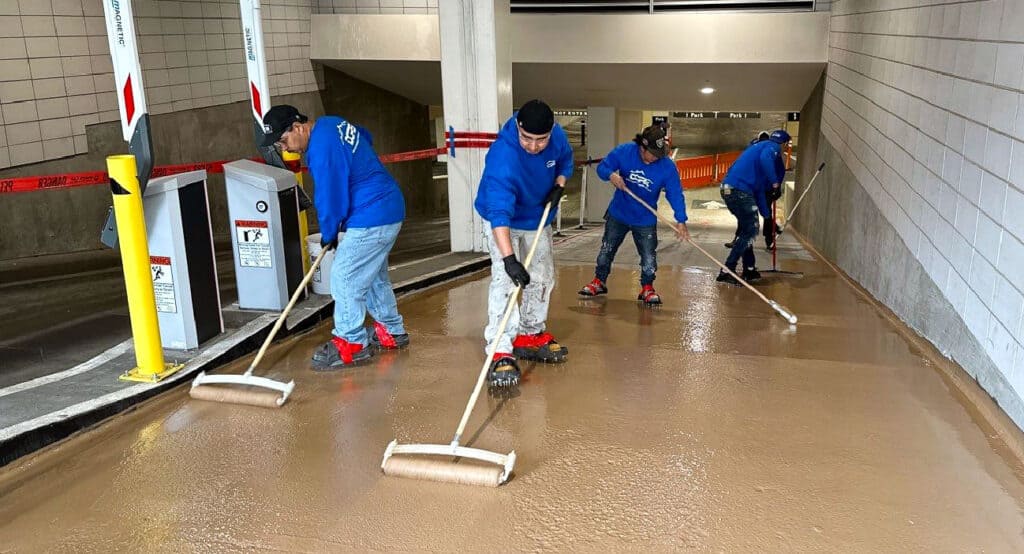Commercial and multi-family buildings are assets that need to be taken care of, especially if they have elevated decks and parking garages. If not properly maintained, steel reinforced concrete structures can experience severe issues. This can result in safety hazards, cause very costly repairs, and decrease the value of your property. At DCPS, we’ll provide you with effective waterproofing solutions that prevent costly repairs and replacements. If you manage a commercial or multi-family building, read below to see the various waterproofing methods used to mitigate water intrusion.
Cementitious Waterproofing
Applying a cement-based polymer modified coating to concrete surfaces creates a strong and breathable barrier ensuring your building is protected from water ingress. Cementitious waterproofing is designed for concrete, wood, and masonry surfaces, ideal for parking structures, elevated decks, and common areas. While providing a more natural appearance and durable finish, the largest disadvantage is the lack of elastomeric properties, meaning it is much less flexible than fluid applied alternatives. You can often achieve a more decorative appearance with cementitious coatings to simulate concrete, tile, flagstone, custom textures, and stained surfaces. It is recommended you work with a waterproofing and coating professional for the system selection and installation processes. Professional installers are experienced and skilled to get the job done correctly and efficiently.
Liquid Membrane Waterproofing
Liquid waterproofing, such as polyurethane, epoxy, asphaltic, and acrylic systems are ideal for areas where seamless, flexible, and durable systems are desired. Ideal application areas are balconies, podium decks, planters, parking garages, and green roofs. Compared to cementitious waterproofing, this method offers more flexibility and is more commonly used in the Colorado environment with its extreme weather conditions. Liquid membrane waterproofing is more diverse, with more options for use under different conditions that need to be waterproofed and protected from the elements.
Caulking and Joint Sealants
Every building has penetration points and interfacing conditions with dissimilar materials, such as windows, joints, electrical outlets, lighting, awnings, building to sidewalk joints, and panel to panel joints. It is important to keep these gaps and joints filled with the appropriate elastomeric and waterproof sealant to prevent water, air, and bugs from entering and creating a larger problem. There are many types of sealants to consider, such as silicone, urethane, acrylic, and hybrids. The most appropriate sealant depends on the substrates and conditions the sealant will be exposed to along with desired performance. Although caulking joints and interfacing conditions is the first line of defense, caulking is not always enough on its own. Contact a waterproofing specialist to determine the best solution for your building.
Why Work with Professionals
To ensure the best results and maximize the life of your building, it is highly recommended that you choose a reliable company with experienced waterproofing specialists that can effectively identify and install the appropriate solution for your commercial or multi-family building.
DCPS offers a wide range of services to help business owners effectively waterproof their buildings. Our goal is to provide maximum protection for your assets while providing cost and time savings.
Get in touch with our professionals today. We will conduct a free on-site evaluation, provide recommendations, and develop a customized installation plan for your property.
We offer effective solutions that ensure your building stays protected from water intrusion.



